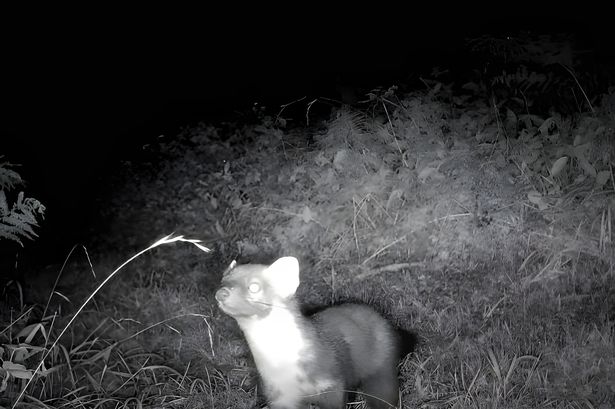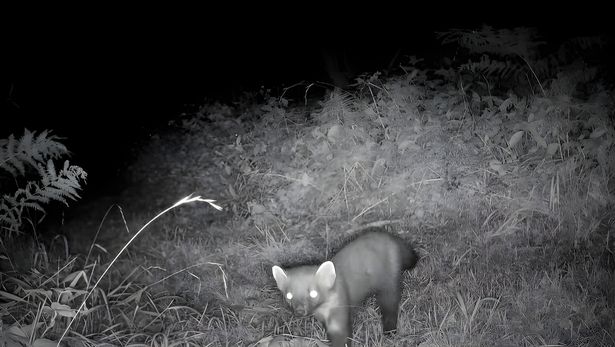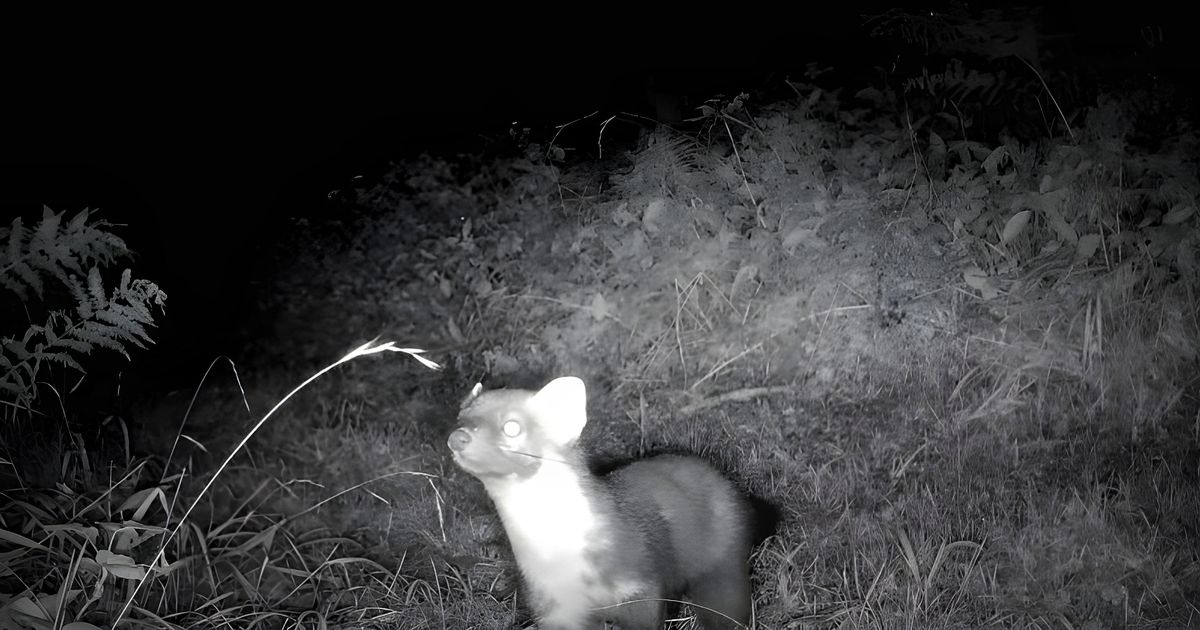The carnivorous mammals were once common across the region but died out due to the loss of their woodland habitat Pine Martin captured on camera in the Mendip Hills by Charlie and Rachel Fayers, A Patch Wilder(Image: Charlie and Rachel Fayers, A Patch Wilder)
Pine Martin captured on camera in the Mendip Hills by Charlie and Rachel Fayers, A Patch Wilder(Image: Charlie and Rachel Fayers, A Patch Wilder)
Pine martens have returned to the area after more than 100 years. The carnivorous mammals were once common across the region but died out due to the loss of their woodland habitat and human persecution.
Small-scale attempts to reintroduce them have been under way on Dartmoor and in the Forest of Dean. But they now appear to be travelling further afield and, in footage captured this week, one was spotted on a night time trail camera.
Charlie Fayers, who is running a re-wilding project on land around 15 miles south of Bristol city centre, was shocked to spot the creature when reviewing the film. He said: “We set up a camera in the woods to monitor wildlife there and were amazed to find a video of a pine marten when we checked it on Tuesday.
“Whilst there have been occasional pine marten sightings in the county in recent years, they are extremely rare and it is unknown if they are breeding or have established a population. To the best of my knowledge, this is the first sighting in the Mendip Hills for at least 100 years.”
In July the conservationists behind the project to return pine martens to Dartmoor revealed they were “ecstatic” to see the reintroduced animals had successfully bred. The discovery came after 15 pine martens – eight females and seven males – were released at undisclosed Dartmoor locations in autumn 2024, as part of efforts to restore the species to the area.
 (Image: Charlie and Rachel Fayers, A Patch Wilder)
(Image: Charlie and Rachel Fayers, A Patch Wilder)
The Two Moors Pine Marten Project partnership, a collaboration of groups which is behind the reintroduction, and its local volunteers, have spent hundreds of hours tracking the movements of the cat-sized animals, installing den boxes for them and checking camera traps to see what they are up to.
Pine martens usually give birth to two or three kits in spring, with youngsters spending their first seven to eight weeks hidden in dens before emerging in early summer, and sticking with their mothers until the following spring. The conservationists behind the project said the population in the South West should now grow gradually over coming years, and the team is preparing for a further release of pine martens at secret locations in Exmoor this autumn.
Devon Wildlife Trust’s Tracey Hamston, who leads the Two Moors Pine Marten Project, said: “When our volunteers discovered the footage of pine marten kits on one of our trail cameras we were ecstatic. This is a historic moment for the return of a native animal and for the future of the South West’s woodlands.
“To have breeding pine martens back after a century’s absence signals a positive step in nature’s recovery.” The discovery of pine martens living in the area follows increasingly regular beaver sightings on the River Avon.
